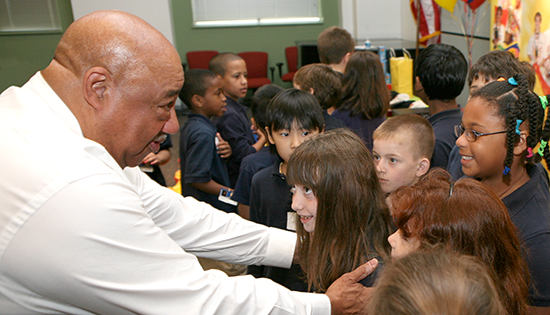Part two of a two-part series by Shawn Collier.
We hear it sensationalized by the media—schools don’t have money, teachers are losing jobs, and students are failing. This view ultimately devalues our entire education system—and a profession that should be at the top of the “we appreciate you” list!

The situation needs to change, and can be changed. Teachers must be allowed to engage students based upon their strengths and weaknesses—not merely operate in ‘what’s going to be on the test’ mode. As a former teacher and math specialist I know that math is not a born ability; it is a skill—one that you are able to improve with practice. If students truly buy into the idea that academic talent is grown, not born, they can exceed expectations. This is where First In Math fits perfectly into a school setting, because its open architecture allows entry at many skill-levels, regardless of grade.
Everything students touch on First In Math is captured on a teacher’s Assessment Page, which serves as a window into each student’s needs—or strengths. When FIM success is promoted, children begin to care about achievement and develop an internal drive to log in to the program every day and practice more to earn more stickers.
While it is important for teachers to be aware of each student’s proficiencies and deficiencies, it is also important for each student to know this information. No matter what one wants to achieve in life, knowing and tracking data is key to growing talent. FIM allows students to monitor their own goals, passing the data baton to the student. It also allows the classroom to talk about what is seen in the data related to math achievement. Are students mostly multiplying by 1, 2, 5, 10, and 11? If so, why is that? As teachers we all know that those are easier to memorize, but allowing the students to facilitate the discussion permits them to take ownership of the outcomes.
In many ways, First In Math can be thought of as parallel paths taken by the teacher and student. The path the students are on is one motivated by a game and the idea of building a score and collecting achievements. The path the teachers walk is the constant collection of data through out the year, and an ability to provide practice to each student specific to his or her needs. In the most successful classrooms, these paths do not remain parallel—they eventually converge.
First in Math provides more powerful information to a teacher than a score on a test. This amazing use of technology, and its gaming format, allows us to immediately act on data related to each student’s strengths and weaknesses. When students are provided with a way to “start as low as you need to, but go as high as you can,” teachers can create an environment where students have an intrinsic drive to do their best.